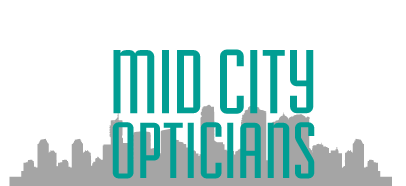Follow Us x
Eye Exams
The process involved in a routine exam is really pretty simple. We start from the front and work our way back. Starting at the front, we look at the eyeglasses, checking the prescription. From there, we look at the tear film.
The tear film is what can cause a lot of visual complaints, whether it be discomfort or blurred vision; the tear film is just like a windshield on a car — if it’s not clear, it’s not smooth, you’re not going to have good vision. Then we work to the front of the eye, meaning the colored part, the iris. Looking right behind the colored part of the eye, we have a lens about the size of an aspirin.
That lens is what we use to focus with and that lens eventually becomes cloudy, leading to what we call a cataract. Everybody eventually gets a cataract. You can be born with a cataract, certain medications and trauma can cause them, but typical it results from age. So, you take a patient age 65-70 and older, you’re going to find a cataract in their eye. Again, they’re still going to be able to function with that cataract, maybe needing a slight change in prescription.
Next, were looking at the back of the eye, looking at the central vision, the macular, an area maybe the size of a pinhead but that’s an area that will degenerate and cause a loss of vision. We’ll look at the optic nerve, which travels from the back of the eye to the back of your brain so any change along that course can affect the optic nerve. Things like multiple sclerosis and brain tumors can show up in the eye. We also get a good look at the blood vessels, anything that affects the vascular system, blood pressure, diabetes, leukemia, AIDS, any of these conditions can show up and manifest in the back of the eye.
Lastly, we look at the periphery of the eye, way out up to the edge of the retina, looking for changes in retina, maybe a detachment, maybe a tear, maybe a hole; it truly gives us an entire look at the eye.
